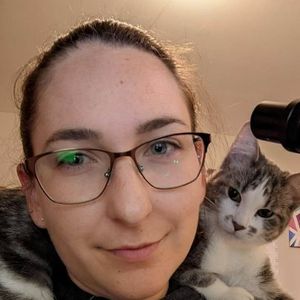Bad Breath (Halitosis) in Cats
Key takeaways
Bad breath (also known as halitosis) in cats is an unpleasant odor emanating from the oral cavity.
- Intermittent bad breath connected to eating smelly foods is normal
- Chronic bad breath is not normal and warrants investigation by a veterinarian
- Halitosis is caused by changes to specific structures in and around the mouth including the mouth itself and the skin around the mouth
- It is also caused by biochemical changes in the body that change the composition of the air itself when it is exhaled
- Possible causes include periodontal disease, diseases of the internal organs, stomatitis, cancer, respiratory disease, and oral injury
- Diagnostic tools include physical examination, blood work, and diagnostic imaging such as dental x-rays
- Treatment depends on the underlying cause. Prognosis is difficult to generalize due to the variety of possible causes
Connect with a vet to get more information about your pet’s health.
A closer look: Bad Breath (Halitosis) in Cats
Generally speaking, halitosis is associated with either a change to the health of the mouth itself, a biochemical change which alters the composition of exhaled air, or a change in the morphology of the skin around the mouth.
Possible changes within the mouth include changes to:
- Oral microbiome (bacteria, plaque, tartar)
- Tissue (dead, dying or bleeding tissue)
- Chemical content of saliva in cats with kidney failure (uremic fetor)
- Foreign object embedment (food particles, plant matter)
Possible changes within the exhaled air include the smell of ketones (similar smell to acetone) in the breath of cats with diabetes.
Possible changes in the skin around the mouth include skin fold dermatitis.
Halitosis is common in cats. If bad breath is not associated directly with the consumption of smelly food, it requires the prompt attention of a veterinarian to determine the underlying cause. Causes are usually not life-threatening. In some cases, more serious diagnoses require extensive treatment. Generalizing outcomes is difficult due to the variety of underlying causes.
Connect with a vet to get more information
Risk factors
Bad breath is not normal in cats. While eating pungent foods like tuna or cat food leaves a residual odor for a short time, continuous bad breath is a sign of an underlying condition. The severity of halitosis depends on specific considerations, including whether the symptom is:
Acute or chronic: In some cases, acute halitosis is caused by lodged food particles or minor infections. In most cases, chronic halitosis is caused by periodontal disease. In rare cases, it is caused by serious diseases such as stomatitis, kidney disease, or diabetes.
Intermittent or persistent: In some cases, intermittent halitosis is linked to food smells or particles stuck in the teeth. Persistent halitosis indicates a more serious underlying condition.
Static or progressive: Progressively worsening breath may indicate conditions that worsen over time.
The type of smell: Kidney disease can cause breath to smell of ammonia or urine. Diabetes can cause breath to smell sweet.
Associated with other symptoms including discoloration of the teeth, bloody gums, missing teeth, icterus (jaundice), vomiting, etc
Possible causes
There are many conditions commonly associated with halitosis in cats.
Testing and diagnosis
Diagnostic tools for halitosis include:
- Physical examination
- Bloodwork
- Diagnostic imaging including dental X-rays
Depending on underlying causes, treatment plans may include:
- Tooth cleaning and changes in oral hygiene routines
- Removal of foreign objects, cleaning and possibly antibiotics where secondary infection has occurred
- Surgery and/or chemotherapy
- Removal of some or all of the teeth and roots
- Diagnosis and treatment of underlying causes
- Management of blood sugars
- Diagnosis and treatment of underlying causes of respiratory diseases
Similar symptoms
Eating foods with a naturally strong odor like cat food or fish leaves a residual odor for a short time.
Associated symptoms
Associated symptoms depend on the underlying cause.




